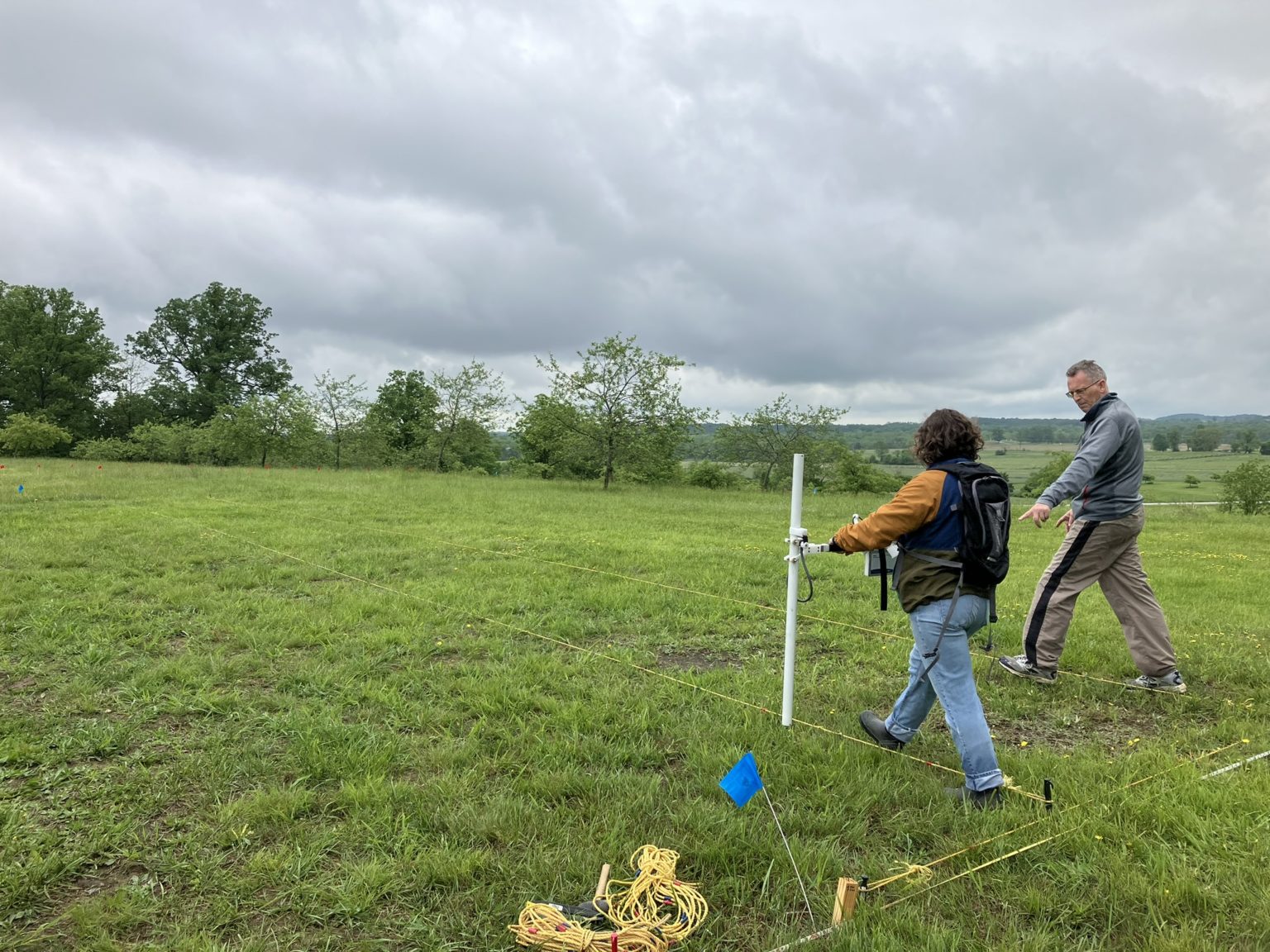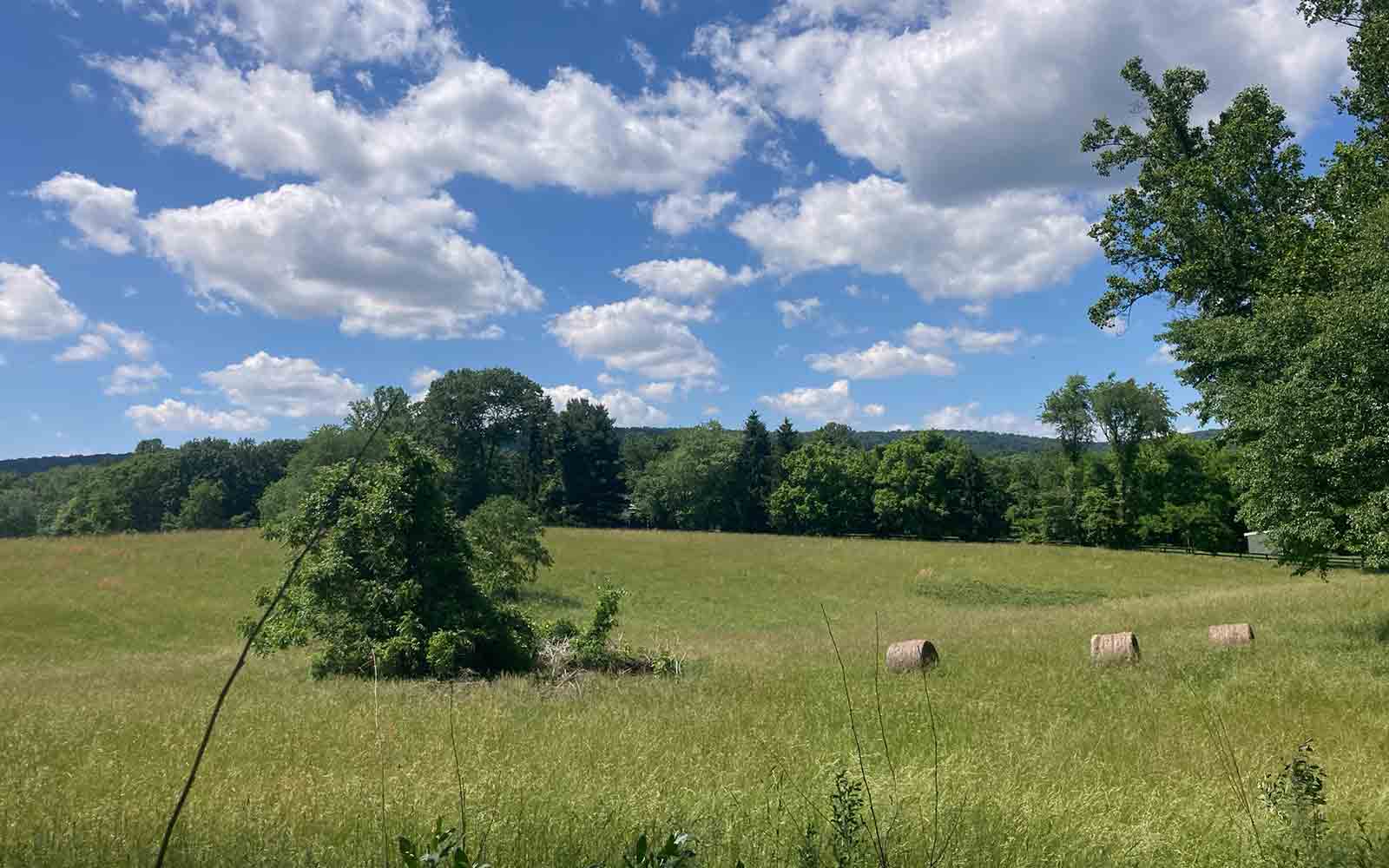Non-invasive techniques, such as ground penetrating radar (GPR), magnetometry, and metal detection have revolutionized the way AAHA approaches cultural resources studies
The advancement of non-invasive remote sensing techniques has revolutionized how archaeologists identify and study the material culture of past people. These methods allow for the identification of features and other significant archaeological contexts without the need for more destructive practices, such as excavation. By using remote sensing techniques such as metal detection, ground penetrating radar, and magnetometry and electrical resistivity, archaeologists can pinpoint locations for intensive study, substantially cutting down on the cost and time normally associated with evaluation and data recovery cultural resources services.
One of the most widely used non-invasive tools in archaeology is metal detection. Metal detectors are invaluable for locating metallic artifacts, such as coins, weapons, and jewelry. This method is particularly useful in areas where metal objects are expected but where other artifacts or features may not be present. These can include short-term occupations, like military encampments, or low-status occupations, like tenant farms or quarters for enslaved people. Metal detectors work by emitting an electromagnetic field and detecting changes caused by metallic objects. When a metal object is encountered, the device signals its presence. Metal detector hits are flagged and mapped, providing a rough outline of the site, and then they are usually sampled to get a sense for what types of material are present.
Ground Penetrating Radar (GPR) offers a more comprehensive view beneath the ground surface. GPR operates by sending radar pulses into the ground and recording the echoes that bounce back from subsurface interfaces that vary from the surrounding soil. This technique can potentially reveal buried walls, foundations, disrupted soil stratigraphy, and voids without any digging. One of GPR’s significant advantages is its ability to provide three-dimensional data, enabling archaeologists to create detailed maps of subsurface features. GPR is particularly effective in dry, sandy soils but can be less effective in clay-rich or waterlogged areas where the radar signals may be absorbed or scattered. Despite these challenges, GPR’s ability to detect a wide range of features makes it an indispensable tool in archaeological surveys.
Magnetometry is another non-invasive technique that has proven to be highly effective in archaeological investigations. This method measures variations in the Earth’s magnetic field caused by buried features which could be disturbances to soil stratigraphy, metal objects and/or objects/soils that have been magnetized. Many archaeological materials, such as fired clay, stones, and metals, have distinct magnetic properties that can be detected by magnetometers. This technique is particularly useful for identifying hearths, kilns, areas of large-scale ground disturbance like earthworks, and other structures with significant magnetic signatures. The data collected through magnetometry can be used to produce detailed maps that highlight areas of interest for further investigation. However, the effectiveness of magnetometry can be influenced by modern disturbances, such as metal debris or infrastructure, which may produce misleading results.
Electrical resistivity, also known as resistivity testing, is another valuable technique in the archaeologist’s toolkit. This method involves passing an electric current through the ground and measuring the resistance encountered. Different materials and soil conditions affect the flow of electricity differently. By mapping the variations, archaeologists can infer the presence of subsurface features. Resistivity surveying is particularly useful in identifying buried walls, ditches, and other features with distinct electrical properties. However, this technique requires good soil contact and can be influenced by moisture content, which can affect the accuracy of the readings.
Together, these non-invasive techniques provide archaeologists with a powerful set of tools for understanding archaeological sites. AAHA provides metal detecting and GPR services, and is working to include magnetometry and electrical resistivity to its portfolio. If you’ve received a request for a cemetery investigation, Phase I survey, Phase II evaluation, or Phase III data recovery, contact us today to see how AAHA’s remote sensing team can save you time and money.


